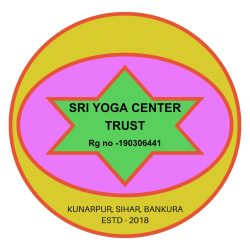References are present in two ways.
1. Directly with the word ” Durga”.
2. Indirectly with the Meaning and activities of Durga.
Asper Sri Sri Chandi, Durga means a combination power or energy of every Divine things and Gods and also beyond of that.
In fact this active principle of Paramatma is the main source of everything.
Paramatma is neither masculine or feminine. If consider masculine this becomes almost similar to Siva, Vishnu, Krishna. If consider in feminine, this will be Maha Kali, Durga(Maha Lakshmi), Maha Saraswati etc. Adi Mata.
Durga protects all the creation of Paramatma like the mother and like the Castle or Durgo. Thus She leads our life through the cycles of birth and death to the Self Realisation or Mukti or Mokhsa.
This whole matter is a big game of “Paramatma”. This is called “Leela”. Paramatma plays this Leela with the help of “Mahamaya”. Mahamaya creats Maya. “Maya” is illusion. We all are under control of this Game. Only those who can feel this magic and can cross the boundery of Maya of Sex, Greed, Selfishness and Ahamkar with the Karuna of MahaMaya, can become free from this cycles. Then this MahaMaya becomes “YogaMaya” to them. They are Yogi, Rishis, Aghory, Premi, Bhakta, Parama Vaishnav, Abadhuta, Hansa, ParamHansa, and Free Willed Soul.
If we consider Durga is the main Divine Energy then we will see Her in different names in the Veda. Like Aditi, Saraswati, Ratri, Pusha etc.
If we remember different names of Durga like Parwati, Uma, Haimawati, Gouri, Amba, Ambika, Ambalika, Dhisana, Bhaga, Bharati, Mrida, we will find all of them in the Veda and Upanishads.
Directly referring as “Durga” is present mostly in Chandi.
Adhyaya 4, Mantra 11,17
Adhyaya 5, Mantra 12, 116
Adhyaya 9, Mantra 31
Adhyaya 10, Mantra 3
Adhyaya 11, Mantra 24, 50
In the Reek Veda
1.
5th Mondolom, 4th Sukta, 9th Sloka.
(In Durga Puja worshipping)(Reeg Vedic)
BasuShruta Rishi, Jatobeda Agni Debata, Tristupta Chanda:” Biswani No DURGAHA Jatobedah Sindhum Naba Duritani parshni”.
2.
Every day Surrendering of works by the Brhamins.
Kashyapa Apatya Marichi Rishi, Tristupta Chanda,” JatoBedase Sunabamo Somom Arati Yato Ni Dahati Bedo, Sa nah Parsadati DURGANI Bishwa Nabeba Sindhum DuritatyaAgni.”
The word Durga there implies the Fort or Castle.
in Yajurveda
Sukla Yaju: 1st Adhyaya: Mantra 19.
Dhishana, Parwatetee.
3rd Adhyaya
Mantra 57:Rudra bhagah SwaSram Ambikaya ..
5th Adhyaya. Mantra 12.
Singhayashi Swaha ..(Oh. Mother like the Lioness .)
Mantra 25.
VaishnavaOsi Vaishnava Stha.(Vaishnavi)
6 th Adhyaya
Mantra 35
….Dhishane Bidbi Sati Bidayetham Urjja Dadhatham.( Dhishana, Sati,)
Krishna Yaju: 7th Kanda 5th Prapathak
Ambe AmbayaAmbike…..
In Atharva Veda 1.
: 7th Kanda, 6th Anubak, 2nd Sukta, 1st Sloka, 2nd line
“Sa Nah parsadati Durgani Bishwa skhamat DevoAoti DurityaAagnih.”
2.
9th Kanda,5th Anubak, 1st Sukta,15th Sloka:
“Striyah Sati sta U Me Pungsha Ahuh….”
Supreme Lady, She is “Sati” Again (U Me) Siva(Pungsha) Ahuh(is)….”
In Upanishads: Keno Upanishad: Haimawati.
Narayan Upanishad( Under Taittiriya Samhita of Krishna Yajurveda): ” TamAgnibarnam….Durga Debim SaranamAham prapodye…..”.
Yajika Upanishad: ” KATYAYANAYA BIDMAHE KANYA KUMARIM DIMAHI TANNO DURGI/DURGA PRACHODOYAT.”
In the Geeta
7th Adhyaya,Jnana- Vijnana Yoga:
She has been described as “Yoni”, (Sloka 6), “Gunamayee” (Sloka 14) and “Yoga Maya”(Sloka 25)
Seeing the reference of Parwati in Yajurveda and Haimawati in the Upanishads if you think from this in the Purana Her home is given as Himalaya as the Purana is after the Veda then again I request to see the line in Devi Suktam of the Reek Veda.(10th Mondolom, 125 Sukta, Paramatma Devata, Bak Rishi). The BakAmbhrini is speaking that I am the power or energy to knotting the thread of the bow of Rudra( Siva )(to kill the Tripurasura)(Purana: TripuraAsura Badham).
Now it is your turn to judge which one is the first, the Veda or the Purana?
Now You can find a plenty of references on Durga from Sanatana DhramaGranthas.



